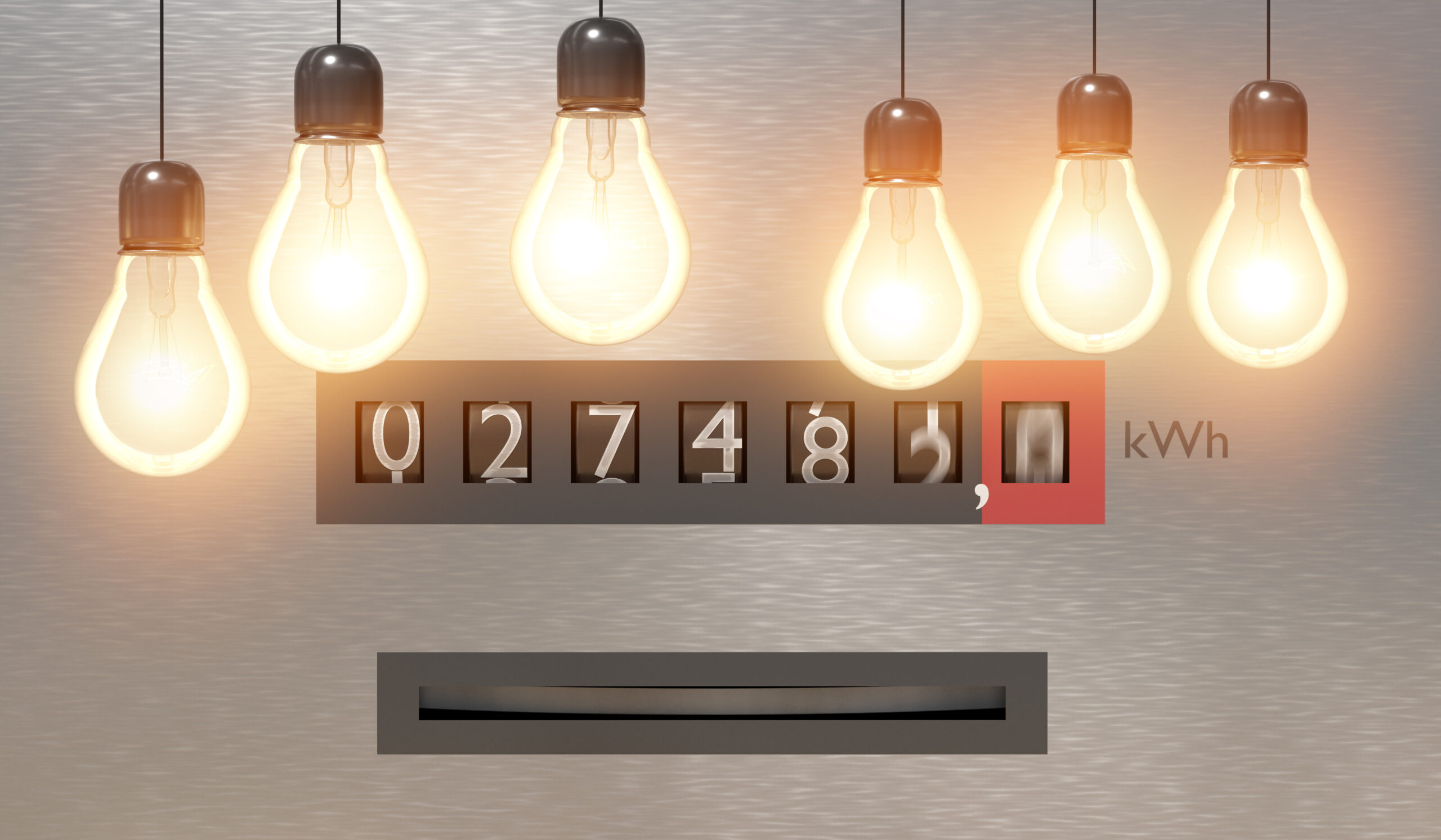If you are one of the many Australians who is still enjoying the benefits of working from home, you might have received a shock or two on your energy bill recently.
While the 2023 energy crisis has been widely discussed and is undoubtedly having an impact on your bill, you might not be as aware of the creeping costs of working from home.
In this article, we’ll look at the different ways that working from home uses your power and the steps you can take to control your energy usage.
Does Working from Home Increase Electric Bills?
Working from home has become increasingly common, and although there are many benefits (hello work pyjamas), the one undeniable downside is its impact on costs. Between running laptops or computers and heating and lighting your house during the hours you would normally be in the office, experts have estimated that you could be paying hundreds of dollars extra on your bill every year.
How Much Power Do You Use Working from Home?

Take a look at the list below to discover some of the main culprits for boosting your energy bill while you work from home, and the ways you can reduce them.
Computer
Computers use significantly more power than laptops, but for many work-from-homers, they are a necessary evil.
How much electricity does a computer use?
Using a desktop computer and monitor uses around 0.15kWh per hour. This can vary from as little as 0.6kWh up to 0.3kWh depending on the size and quality of your monitor and the energy efficiency rating of your computer.
How much does it cost to power a computer at home?
Assuming you use your computer for 7 hours a day, based on a usage charge of 30c/kWh, your computer could add between $32.76 and $81.90 a year to your bill.
If you also use accessories such as a printer, scanner or speakers, your cost could be more than double.
Energy-efficiency tips for your computer
- Turn it off at the wall when not in use
- Choose an energy-efficient model
- Adjust your brightness settings
- Minimise use of accessories where possible – consider a radio for your music instead of streaming through your computer
Laptop
If you can do your work from a laptop, your electricity bill will thank you for it! Running a laptop computer uses substantially less power than a desktop computer, but unfortunately, it’s not a viable alternative for a lot of people.
How much electricity does a laptop use?
Because they are designed to run on battery power, laptops are generally much more efficient than desktops. On average, a laptop uses around 0.2kWh per hour – a third of even the most energy-efficient desktops. However, this can vary depending on the size and model of your laptop.
How much does it cost to power a laptop at home?
Based on the cost of electricity being 30c/kWh and using your work laptop for 7 hours a day, it will cost between $10 and $20 a year to run.
Energy-efficiency tips for your laptop
- Dim the brightness of your screen (especially on LCD models)
- Set up sleep mode to avoid wasting energy when you’re away
- Choose an energy-efficient model
- Avoid WiFi and Bluetooth whenever possible
Heating and Cooling
Heating, ventilating and air conditioning systems (HVAC) make up the biggest portion of your electricity bill, and if you work from home, you are likely to be using them more than ever.
How much does it cost to heat my home?
Heating a home can cost anywhere between $550 and $1,800 per year. For the hours spent at work, this is between $208 and $682 extra on your bill. The variation in the cost depends on multiple factors, such as the type of heating system, the size of your home and the climate where you live. If you use electric in-slab heating, this cost could more than double.
How much does it cost to cool my home?
Cooling is generally a bit cheaper than heating. An air conditioner costs between $30 and $320 per year to run, while ceiling fans are the most cost-effective option at $25 to $55 per year.
Energy-efficiency tips for your HVAC
- Set your thermostat to the optimal temperatures
- Only heat or cool the rooms you are in
- Dress for the weather
- Improve insulation in floors, ceilings, doors and windows
Lighting
Lighting can make up to 10% of your electricity bill, particularly in the darker winter months. For people working from home, lighting use shoots up as they need to light their homes during work hours as well as evenings and weekends.
How much electricity does it take to light my home office?
The amount of electricity you use depends on the type of lighting you have and the size of your space. An incandescent lightbulb uses between 60 and 100 watts, whereas a more efficient LED light uses only 25 watts.
How much does it cost to light my home office?
If you have 3 lightbulbs in your office, you could pay between $30 and $140 extra every year, depending on the type of lightbulb you use and how often you have the lights on.
Energy-efficiency tips for your lighting
- Turn the lights off when you leave the room
- Use natural lighting from windows or skylights whenever possible
- Switch to LED lightbulbs
- Use sensors to adjust the lighting in response to the amount of natural light
TV
Don’t tell the boss, but for most people, working at home means a bit more TV time, even if it’s just in place of the time you normally spend on your commute.
How much electricity does my TV use?
A typical TV uses about 140 watts per hour to run, however, this varies dramatically depending on the size, screen type and energy rating of your model. LCD screens tend to be the most energy-efficient, with OLED using almost double the amount of power to run.
How much does it cost to watch my TV?
Assuming you watch 2 hours of extra television every day that you work from home, you could pay anywhere from $6.50 to $34 per year in additional electricity. If you have the TV running in the background while you work, this cost will shoot up accordingly.
Energy-efficient tips for your TV
- Choose an energy-efficient model, such as an LCD
- Choose a smaller screen size
- Turn off the TV – try a radio for background noise instead
- Turn it off at the wall when not in use
Kitchen Appliances and Dishwasher
Eating at home instead of using the office kitchen means that you are using kitchen appliances, such as your kettle, microwave and dishwasher more than usual.
How much electricity does my kitchen use?
Modern kitchen appliances vary in their energy consumption. As a guide, your kettle uses around 0.04kWh per boil, your microwave, depending on the power setting, is between 200W and 1300W and your dishwasher is between 1.2kWh and 1.5kWh.
How much does it cost to eat my work lunch at home?
The biggest cost comes from running your dishwasher an extra time per day – depending on the rating, this could add between $26 and $55 a year to your electricity bill. Using your kettle and microwave each day could add approximately $20 to your annual bill.
Energy-efficiency tip for your kitchen
- Fill your dishwasher before running a cycle
- Turn appliances off at the plug
- Choose models with a high energy star rating
- When possible, run your dishwasher in off-peak periods
What Runs Your Electric Bill Up the Most?
When it comes to working from home, your heating and cooling are by far the biggest additional expense you will see on your energy bill. The good news is – it’s in your control! By following the best practices for energy efficiency you can reduce the cost of using your HVAC during working hours.Of course, everyone is different, so you might be overspending on some items – perhaps you like to have your TV running all day to replace the noise of a busy office, or maybe you are more productive sitting under bright lights. Take a look at the table below to see if your habits are unknowingly increasing your electricity bill.
If you have a smart meter, you should also use your app or in-home device (IHD) to track your usage and see if there are any areas where you could cut down on your power consumption.
| Item | Estimated Additional Cost Range Per Year |
| Heating | $208 – $682 | Cooling | $30 – $320 | Lighting | $30 – $140 | Computer | $33 – $82 | Kitchen appliances | $46 – $75 | TV | $7 – $34 | Laptop | $10 – $20 |
How To Save Energy While Working From Home

There are a lot of ways you can save energy working from home. As well as the tips included for the specific appliances above, we’ve put together a few extra things you can do to reduce your bill.
- Energy Saving Smart Devices
- Solar Power
- Compare Energy Providers
If you haven’t compared your energy bill in over 12 months, then you could have been automatically transferred to your provider’s standard plan which is usually the most expensive option. Don’t pay more than you need to – compare your energy bills and save!
Conclusion
If you work from home, unfortunately, you will pay more on your electricity bill to power your computer, laptop, HVAC, lighting and kitchen appliances. However, the good news is that there are plenty of things you can do to take control and reduce your bill.As well as following energy efficiency tips for these key culprits, you should also consider using smart devices to automate your energy consumption, installing solar panels and reviewing your energy plan to make sure you are getting the best value from your provider.









